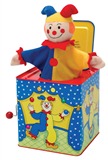 An ubiquitous theme in art criticism is novelty.
An ubiquitous theme in art criticism is novelty.
Critics often praise artwork—painting, music, films, books—for “breaking new ground” or being innovative, while they condemn others for being cliché, formulaic, or “predictable.” Transgression and experimentation are seen as virtues in themselves, without necessary reference to any other artistic value, any explicit goal, or social good.
In the same way, anything familiar is condemned as vulgar convention.
To the chagrin of these critics (or perhaps to their smug satisfaction) the art they praise for its novelty and alleged “courage” is often ignored or openly despised by the general population, while the art they pan as “hackneyed” is often insanely popular. And when these critics also happen to champion humanism or the interests of The People, the irony seems lost on them when the real-life humans who make up The People hate the art they idealize.
What’s going on here?
Simple: the aesthetic ideals of these critics are completely out of whack with human reality.
The real question? Is innovation a meaningful, mature measure of value in art or, particularly, in literature?
_
DENIAL AND DOGMA
This tendency to praise mere innovation in art is part of a broader pattern of ideological tomfoolery, with culprits in all corners of the political gamut: liberals and conservatives, progressives and traditionalists, libertarians, and authoritarians, and other-various-tarians. It’s a pattern of pushing high-minded ideals at the expense of human nature and scientific reality.
There is no flavor of partisanship immune to this silliness. Immature minds on all sides seem almost to enjoy asserting simplistic nonsense in defiance of human nature. However, idealizing innovation is peculiar to progressive politics, which tends to distill itself into a vague sense that Change is Good.
(Clue: it’s not always. Ask any cancer patient how they like the change in their genetic code.)
And, having seen progressive critics praise all sorts of unpopular hackwork as “literary” or “high art” simply because it violates convention, it pleases us immensely when we see some of that same highly praised, unpopular hackwork exposed as having been subsidized by the Central Intelligence Agency as propaganda against the Soviet Union. Apparently, the ground-breaking technique of drawing squares or flinging paint randomly at a canvas required Cold War funding to survive as an artform. And what neat fact does that linked article point out?
What seems most bizarre about this turn of events is that avant-garde art in America has never been much appreciated by the average citizen, to put it mildly. American Main Streets harbor undercurrents of distrust or outright hatred for out-there, art-world experimentation, a trend that filters upward and periodically erupts in controversies over Congressional funding for the arts.
Actually, this doesn’t seem bizarre at all to me. When you bypass human nature to grind some weird political axe, natural humans tend not to be enthusiastic about the results. For example, the unreadability of contemporary literary poetry, and much contemporary realist fiction, outside the cloisters of the university—where people are forced to read it—and the New York-based literary community, where enthusiasm for the silly redundancy of “literary” literature functions as a sort of shibboleth. The edgy, the innovative, the transgressive, indeed the revolutionary are the leaders of this pack.
More newness! Change = progress = good!
This sort of “high” art is is really artifice, art that can only survive on life support, art that is culturally unviable and ethically unjustifiable, the artistic equivalent of a synthetic fertilizer applied to dead soil, which ultimately poisons the environment it’s intended to improve.
_
ART IS NOT A JACK-IN-THE-BOX
To elevate transgression, innovation, experimentation, and surprise as the primary virtues of art reduces art to a childish dalliance, and reduces critics and readers to toddlers giggling at a game of peek-a-boo.
 If you find this comparison unfair, consider this:
If you find this comparison unfair, consider this:
Insisting that breaking new ground is the primary virtue of art leads artists to engineer an unsurprising surprise, an unscary scare, the boo we know is coming because that’s what the game is all about. Every kid knows that peek-a-boo eventually leads to the boo; the only question is when.
Art praised primarily for “breaking new ground” always culminates in boo, a boo intended to spook some notional defender of convention (often a strawman) and thus delight the politically correct. Tee-hee!
The problem with this measure of artistic value is that it creates an endless treadmill of need for further transgression, further experimentation, further rule-breaking and boundary-stretching and ground-breaking. This is a recognized psychological phenomenon, in fact, referred to as the hedonic treadmill, and it leads to nothing but harmful excess. Criticism that measures art by how much it titillates our mental and moral taste-buds can never be satisfied. You’re always looking for a higher high, a bigger fix of boo.
Essentially, it becomes an addictive force, leading us from merely effective doses of social and cultural medicine to destructive doses of social and cultural poison.
_
CHANGE ≠ EXCELLENCE
Let me continue the biological analogy we used to compare transgressive art to narcotics. Good art is like healthy food. There can be a diversity of cuisines, a variety of tastes and recipes, but the basics of human nutrition are real. Deviating from them can cause malnutrition, or even toxicity.
Swallowing art left and right simply because it’s different is like aesthetic pica. It’s not “edgy” or “avant-garde.” It’s an artistic disorder elevated to a virtue.
The principles of evolution work just as well with our psychology (which is largely based on biological functions) as they do for our biology. New stories evolve from old ones in a gradual process, most changes, like most mutations, are not helpful, some are destructive. Far too many are cancerous.
I am going to say this knowing it will make progressive brains explode: transgressive, experimental art valued primarily because it is ground-breaking and innovative is the cultural equivalent of GMOs.
Stories with mythic resonance and narrative structure are better for human psychology for the same reason organic food is better for human biology: they represent what we have evolved to process. The human brain processes stories it hears just as the human body processes chemicals it ingests. Certain input is healthy and helps us grow and heal. Outside that diet is poison, disease, and death.
There’s a reason why critical theories of story structure and character archetypes are so persistent even though they aren’t often very scientifically rigorous: they reflect the reality of Homo sapien‘s narrative metabolism. The existence of patterns in the way we interpret people and events is obvious. Even if the study of narrative structure hasn’t risen to the level of science yet, the fact that it exists as a human norm is undeniable.
And, facts do back up certain implications from this. For example, we are taught to fear and hate spoilers, in the mistaken notion that knowing the end of a story “ruins” it somehow. But, if that’s so, why do people buy DVDs? Why do they reread favorite novels? Why was I more eager to see The Empire Strikes Back after I learned from a friend that Vader was Luke’s father?
There’s something askew in the common belief that the value of a story is in narrative surprise.
There’s even science to help debunk this fallacy. Researchers who presented stories to two groups of readers, “spoiling” it for one group but not the other, found that people who know the end of stories before reading them actually enjoy them more!
Is surprise a nice thing to have in art? Sure, sometimes. But to reduce art to surprise, or even to elevate surprise as one of the main virtues of art, is silly, unscientific, and inhuman.

Engdahl, progressive theater, and Melvillean sword-points | J. Nelson Leith
October 10, 2014 at 11:02 am
[…] fans know, I’m not a big fan of consciously transgressive art, […]